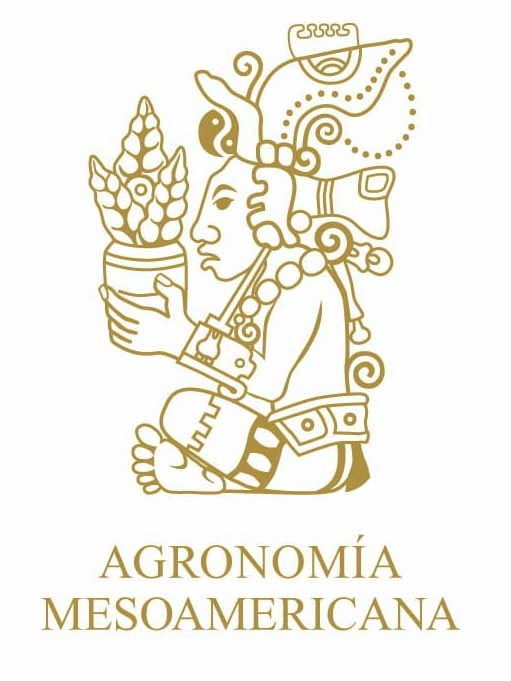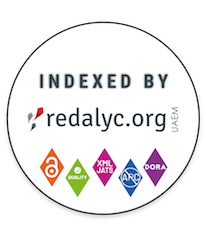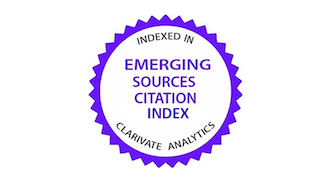Effect of Bacillus spp. as a biostimulants for Brassica oleracea var. capitata and Brassica oleracea var. sabellica microgreens
DOI:
https://doi.org/10.15517/am.2025.61996Keywords:
biostimulants, brassicas, microgreens, yieldAbstract
Introduction. The Bacillus genus has been used as a biostimulant with positive effects on crop yield and quality. However, there are few studies on its application in microgreens. Objective. To evaluate the effect of B. subtilis (BsC4 and BsPC) and B. thuringiensis (Bt24) as biostimulants on the germination and growth of red cabbage (Brassica oleracea var. capitata) and kale (B. oleracea var. sabellina) microgreens indoor. Materials and Methods. The study was conducted at the Autonomous University of Chihuahua, Mexico, in 2023. Four treatments were assessed: Bt24, BsC4, BsPC, and seedlings without microorganisms (control) on red cabbage and kale seeds, under a completely randomized design (n = 5). Germination was monitored in the first trial, and microgreens development was assessed in the secund. After 15 days, morphological variables, photosynthetic pigments, nitrate content, quality, and yield were measured. Data were analyzed using Analysis of Variance (ANOVA) and Tukey tests (p < 0.05). Results. For kale, Bt24 improved germination speed (31.17 %) and reduced germination time (4.61 %), with no significant effect on red cabbage. In kale, yield increased (62,60 %) with Bt24, particularly in fresh biomass (63.3 %) and cotyledon area (61.57 %). In cabbage, BsC4 increased yield (44.31 %) and improved fresh biomass (42.21 %) and cotyledon area (50.57 %). Nitrate content was highest in lake with BsPC (138.30 %) and in red cabbage with Bt24 (65.14 %), without exceeding safe limits. For visual quality, both crops achieved the “Good” and “Excellent” categories, with no differences between treatments. Conclusions. These results suggest that B. thuringiensis and B. subtilis could be used as growth biostimulants for cabbage and kale microgreens, offering a promising to optimize microgreen production under controlled conditions.
Downloads
References
Adetunji A., Sershen E., Varghese, B., & Pammenter, N. W. (2020). Effects of inorganic salt solutions on vigor, viability, oxidative metabolism and germination enzymes in aged cabbage and lettuce seeds. Plants, 9(9), Article 1164. https://doi.org/10.3390/plants9091164
Akhtar, N., IIyas, N., Yasmin, H., Sayyed, R. Z., Hasnain, Z., Elsayed, A., & El Enshasy, H. A. (2021). Role of Bacillus cereus in improving the growth and phytoextractability of Brassica nigra (L.) K. Koch in chromium contaminated soil. Molecules, 26(6), Article 1569. https://doi.org/10.3390/molecules26061569
Al-Rahbi, B. A. A., Al-Sadi, A. M., Al-Harrasi, M. M. A., Al-Sabahi, J. N., Al-Mahmooli, I. H., Blackburn, D., & Velazhahan, R. (2023). Effectiveness of endophytic and rhizospheric bacteria from Moringa spp. in controlling Pythium aphanidermatum Damping-Off of cabbage. Plants, 12(3), Article 668. https://doi.org/10.3390/plants12030668
Alloggia, F. P., Bafumo, R. F., Ramirez, D. A., Maza, M. A., & Camargo, A. B. (2023). Brassicaceae microgreens: A novel and promissory source of sustainable bioactive compounds. Current Research in Food Science. 6, Article 100480. https://doi.org/10.1016/j.crfs.2023.100480
Ansari, F., & Ksiksi, T. A. (2016). A quantitative assessment of gemination parameters: the case of Crotolaria persica and Tephrosia apollinea. The Open Ecology Journal, 9(1), 13-21. http://dx.doi.org/10.2174/1874213001609010013
Arif, S., Liaquat, F., Yang, S., Shah, I. H., Zhao, L., Xiong, X., & Zhang, Y. (2021). Exogenous inoculation of endophytic bacterium Bacillus cereus suppresses clubroot ( Plasmodiophora brassicae) occurrence in pak choi (Brassica campestris sp. chinensis L.). Plants, 253, Article 25. https://doi.org/10.1007/s00425-020-03546-4
Arkhipova, T. N., Veselov, S. U., Melentiev, A. I., Martynenko, E. V., & Kudoyarova, G. R. (2005). Ability of Bacillus subtilis to produce cytokinins and to influence the growth and endogenous hormone content of lettuce plants. Plant and Soil, 272, 201-209. https://doi.org/10.1007/s11104-004-5047-x
Avato, P., & Argentieri, M. P. (2015). Brassicaceae: a rich source of health improving phytochemicals. Phytochemistry Reviews, 14, 1019-1033. https://doi.org/10.1007/s11101-015-9414-4
Aziz, Z. F. A., Saud, H. M., Rahim, K. A., & Ahmed, O. H. (2012). Variable responses on early development of shallot (Allium ascalonicum) and mustard (Brassica juncea) plants to Bacillus cereus inoculation. Malaysian Journal of Microbiology, 8(1), 47-50. http://dx.doi.org/10.21161/mjm.33711
Azizoglu, U. (2019). Bacillus thuringiensis as a biofertilizer and biostimulator: a mini-review of the little-Known plant growth-promoting properties of Bt. Current. Microbiology, 76(11), 1379-1385. https://doi.org/10.1007/s00284-019-01705-9
Benincasa, P., Falcinelli, B., Lutts, S., Stagnari, F., & Galieni, A. (2019). Sprouted grains: A comprehensive review. Nutrients, 11(2), Article 421. https://doi.org/10.3390/nu11020421
Blake, C., Christensen, M. N., & Kovács, A. T. (2021). Molecular aspects of plant growth promotion and protection by Bacillus subtilis. Molecular Plant Microbe Interaction, 34(1), 15-25. https://doi.org/10.1094/MPMI-08-20-0225-CR
Briatia, X., Jomduang, S., Park, C. H., Lumyong, S., Kanpiengjai, A., & Khaongnuch, C., 2017. Enhancing growth of buckwheat sprouts and microgreens by endophytic bacterium inoculation. International Journal of Agriculture and Biology, 19(2), 374-380. https://doi.org/10.17957/IJAB/15.0295
Caracciolo, F., El-Nakhel, C., Raimondo, M., Kyriacou, M. C., Cembalo, L., De Pascale, S., & Rouphael, Y. (2020). Sensory attributes and consumer acceptability of 12 microgreens species. Agronomy, 10(7), Article 1043. https://doi.org/10.3390/agronomy10071043
Cataldo, D. A., Maroon, M., Schrader, L. E., & Youngs, V. L. (1975). Rapid colorimetric determination of nitrate in plant tissue by nitration of salicylic acid. Communications in Soil Science and Plant Analysis, 6(1), 71-80. https://doi.org/10.1080/00103627509366547
Di Gioia, F., Renna, M., & Santamaria, P. (2017) Sprouts, microgreens and “Baby leaf” vegetables. In minimally processed refrigerated fruits and vegetables; Yildiz, F., Wiley, R.C. Eds.: Springer: Boston, M.A. USA, 2017; pp. 403-432. ISBN 978-1-4939-7018-6. https://doi.org/10.1007/978-1-4939-7018-6_11
Dong, Y. Q., Gao, Y. H., Zhao, T., Ren, G. Q., Liu, Y. L., Guan, B., & Yan, Y. X. (2021). Influencing factors and physiochemical changes of embryogenesis through in vitro isolated microspore culture in Brassica species. Biologia, 76(9), 2629-2654. https://doi.org/10.1007/s11756-021-00721-0
Ebert, A. W. (2022). Sprouts and microgreens-Novel food sources for health diets. Plants, 11(4), Article 571. https://doi.org/10.3390/plants11040571
Eissa, N. H., Zayed, M. S., Hassanein, M. K., Abdallah, M. M. F. (2018). Green pea sprout response to microbial inoculation and increasing atmospheric CO2 concentration. Arab Universities Journal Agriculture Sciences, 26(2D), 2513-2523. https://doi.org/10.21608/ajs.2018.35619
Etesami, H. & Glick, B. R. (2024). Bacterial indole-3-acetic acid: A key regulator for plant growth, plant-microbe interactions, and agricultural adaptive resilience. Microbiological Research, 281, Article 127602. https://doi.org/10.1016/j.micres.2024.127602
Fusari, C. M., Nazareno, M. A., Locatelli, D. A., Fontana, A., Beretta, V., & Camargo, A. B. (2020). Phytochemical profile and functionality of Brassicaceae species. Food Bioscience, 36, Article 100606. https://doi.org/10.1016/j.fbio.2020.100606
Galieni, A., Falcinelli, B., Stagnari, F., Datti, A., & Benincasa, P. (2020). Sprouts and microgreens: Trends, opportunities, and horizons for novel research. Agronomy, 10(9), Article 1424. https://doi.org/10.3390/agronomy10091424
Iqbal, M., Naveed, M., Sanaullah, M., Brtnicky, M., Hussain, M. I., Kucerik, J., & Mustafa, A. (2023). Plant microbe medicated enhancement in growth and yield of canola (Brassica napus L.) plant through auxin production and increased nutrient acquisition. Journal of Soils and Sediments, 23(3), 1233-1249. https://doi.org/10.1007/s11368-022-03386-7
Kang, S. M., Hamayun, M., Khan, M. A., Iqbal, A., & Lee, I. J. (2019). Bacillus subtilis JW1 enhances plant growth and nutrient uptake of Chinese cabbage through gibberellins secretion. Journal of Applied Botany and Food Quality, 92, 171-178. https://doi.org/10.5073/JABFQ.2019.092.023
Katsenios, N., Christopoulos, N. V., Kakabouki, I., Vlachakis, D., Kavvadias, V., & Efthimiadou, A. (2021). Effect of pulsed electromagnetic field on growth, physiology, and postharvest quality of kale (Brassica oleracea), wheat (Triticum durum) and spinach (Spinacia oleracea) microgreens. Agronomy, 11(7), Article 1364. https://doi.org/10.3390/agronomy11071364
Kyriacou, M. C., Rouphael, Y., Di Gioia, F., Kyratzis, A., Serio, F., Renna, M., De Pascale, S., & Santamaria, P. (2016). Micro-scale vegetable production and the rice microgreens. Trends in Food Science and Technology, 57(A), 103-115. https://doi.org/10.1016/j.tifs.2016.09.005
Lastochkina, O., Seifikalhor, M., Aliniaeifard, S., Baymiev, A., Pusenkova, L., Garipova, S., & Maksimov, I. (2019). Bacillus spp.: efficient biotic strategy to control postharvest diseases of fruits and vegetables. Plants, 8(4), Article 97. https://doi.org/10.3390/plants8040097
Lee, J. S., Pill, W. G., Cobb, B. B., & Olszewski, M. (2004). Seed treatments to advance greenhouse establishment of beet and chard microgreens. Journal of Horticultural Sciences and Biotechnology, 79(4), 565-570. https://doi.org/10.1080/14620316.2004.11511806
Li, T., Lalk, G. T., & Bi, G. (2021). Fertilization and pre-sowing seed soaking affect yield and mineral nutrients of ten microgreens species. Horticulturae, 7(2), Article 14. https://doi.org/10.3390/horticulturae7020014
Li, Y. J., & Hu, Q. P. (2020). Studying of the promotion mechanism of Bacillus subtilis QM3 on wheat seed germination based on β-amylase. Open Life Science, 15(1), 553-560. https://doi.org/10.1515/biol-2020-0062
Liang, Y. R., Liao, F. C., & Huang, T. P. (2022). Deciphering the influence of Bacillus subtilis strain Ydj3 colonization on the vitamin C contents and rhizosphere microbiomes of sweet peppers. PLoS One, 17(2), Article e0264276. https://doi.org/10.1371/journal.pone.0264276
Lichtenthaler, H. & Wellburn, A. R. (1983). Determinations of total carotenoids and chlorophylls a and b of leaf extracts in different solvents. Biochemical Society Transactions, 11(5), 591-592. https://doi.org/10.1042/bst0110591
Luetic, S., knezovic, Z., Jurcic, K., Majic, Z., Tripkovic, K., & Stlovic, D. (2023). Leafy vegetable nitrite and nitrate content: potential health effects. Foods, 12(8), Article 1655. https://doi.org/10.3390/foods12081655
Maleva, M., Borisova, G., Ahamuefule, C., Darkazanli, M., & Kumar, A. (2024). Effect of PGPR Anthrobacter sp. CTF1 and foliar iodine spraying on pea microgreens growth in hydroponic culture. BIO Web of Conferences, 121, Article 02008). https://doi.org/10.1051/bioconf/202412102008
Mendoza-Alatorre, M., Infante-Ramirez, R., González-Rangel M. O., Nevárez-Morillón, G. V., González-Horta, M.C., Hernández-Huerta, J., & Delgado-Gardea, M. C. E. (2024). Enhancing drought stress tolerance and growth promotion in chiltepin pepper (Capsicum annuum var. glabriusculum) through native Bacillus spp. Scientific Reports, 14, Article 15383. https://doi.org/10.1038/s41598-024-65720-y
Mir, S. A., Shah, M. A., & Mir, M. M. (2017). Microgreens: production, shelf life, and bioactive components. Critical Reviews in Food Science and Nutrition, 57(12), 2730-2736. https://doi.org/10.1080/10408398.2016.1144557
Misra, S., & Chauhan, P. S. (2020). ACC deaminase-producing rhizosphere competent Bacillus spp. mitigate salt stress and promote Zea mays growth by modulating ethylene metabolism. 3 Biotech, 10(3), Article 119. https://doi.org/10.1007/s13205-020-2104-y
Naing, A. H., Maung, T. T., & Kim, C. K. (2021). The ACC deaminase-producing plant growth-promoting bacteria: influences of bacterial strains and ACC deaminase activities in plant tolerance to abiotic stress. Physiologia Plantarum, 173(4), 1992-2012. https://doi.org/10.1111/ppl.13545
Ndeddy, A. R. J., & Babalola, O. O. (2016). Effect of bacterial inoculation of strains of Pseudomonas aeruginosa, Alcaligenes faecalis and Bacillus subtilis on germination, growth, and heavy metal (Cd, Cr, and Ni) uptake of Brassica juncea. International Journal of Phytoremediation, 18(2), 200-209. https://doi.org/10.1080/15226514.2015.1073671
Nivetha, N., Asha, A. D., Krishna, G. K., Chinnusamy, V., & Paul, S. (2024). Rhizobacteria Bacillus spp. mitigate osmotic stress and improve seed germination in mustard by regulating osmolyte and plant hormone signaling. Physiologia Plantarum, 176(1), Article e14202. https://doi.org/10.1111/ppl.14202
Oulebsir-Mohandkci, H., Benzina-Tihar, F., & Hadjouti, R. (2021). Exploring biofertilizer potential of plant growth-promoting rhizobacteria Bacillus clausii strain B8(MT305787) on Brassica napus and Medicago sativa. Notulae Botanicae Horti Agrobotanici Cluj-Napoca, 49(4), Article 12484. https://doi.org/10.15835/nbha49412484
Palmitessa, O. D., Renna, M., Crupi, P., Lovece, A., Corbo, F., & Santamaria, P. (2020). Yield and quality characteristics of Brassica microgreens as affected by the NH4: NO3 molar ratio and strength of the nutrient solution. Foods, 9(5), Article 667. https://doi.org/10.3390/foods9050677
Paradiso, V. M., Castellino, M., Renna, M., Gattullo, C. E., Calasso, M., Terzano, R., Allegretha, I., Leoni, B., Caponio, F, & Santamaria, P. (2018). Nutritional Characterization and shelf-life of packaged microgreens. Food and Function, 9(11), 5629-5640. https://doi.org/10.1039/C8FO01182F
Ramirez, D., Abellán-Vitcorio, A., Baretta, V., Camargo, A., & Moreno, D. A. (2020). Functional ingredients from Brassicaceae species: overview and perspectives. International Journal of Molecular Science, 21(6), Article 1998. https://doi.org/10.3390/ijms21061998
Ranal, M. A., & Garcia, D. (2006). How and why to measure the germination process? Brazilian Journal of Botany, 29(1), 1-11. https://doi.org/10.1590/S0100-84042006000100002
Rennie, T. J., Vigneault, C., Raghavan, G. S. V., & DeEll, J. R. (2001). Effect of pressure reduction rate on vacuum cooled lettuce quality during storage. Canadian Biosystems Engineering, 43(3), 39-43. https://doi.org/10.5555/20023076811
Rouphael, Y, Colla, G., & De Pascale, S. (2021). Sprouts, microgreens and edible flowers as novel functional foods. Agronomy, 11(12), Article 2568. https://doi.org/10.3390/agronomy11122568
Ryu, C. M., Farag, M. A., Hu, C. H., Reddy, M. S., Wei, H. X., Par’e, P. W., & Kloepper, J. W., (2003). Bacterial volatiles promote growth in Arabidopsis. Proceedings of the National Academy of Sciences, 100(8), 4927-4932. https://doi.org/10.1073/pnas.0730845100
Saengha, W., Karirat, T., Buranrat, B., Matra, K., Deeseenthum, S., Katisart, T., & Luang-In, V. (2021). Cold plasma treatment on mustard green seeds and its effect on growth, isothiocyanates, antioxidant activity and anticancer activity of microgreens. International Journal of Agriculture and Biology, 25, 667-676. https://doi.org/10.17957/IJAB/15.1715
Tan, L., Nuffer, H., Feng, J., Kwan, S. H., Chen, H., Tong, X., & Kong, L. (2020). Antioxidant properties and sensory evaluation of microgreens from commercial and local farms. Food Science and Human Wellness, 9(1), 45-51. https://doi.org/10.1016/j.fshw.2019.12.002
Turan, M., Ekinci, M., Yildirim, E., Günes, A., Karagöz, K., Kotan, R., & Dursun, A. (2024). Plant growth-promoting rhizobacteria improved growth, nutrient, and hormone content of cabbage (Brassica oleracea) seedling. Turkish Journal of Agriculture and Forestry, 38(3), 327-333. https://doi.org/10.3906/tar-1308-62
Waguespack, E., Bush, E., & Fontenot, K. (2022). The effect of organic biostimulants on beneficial soil microorganism activity. Open Journal of Ecology, 12(8), 499-512. https://doi.org/10.4236/oje.2022.128027
Wang, J., Qu, F., Liang, J., Yang, M., & Hu, X. (2022). Bacillus velezensis SX13 promoted cucumber growth and production by accelerating the absorption of nutrients and increasing plant photosynthetic metabolism. Scientia Horticulturae, 301, Article 111151. https://doi.org/10.1016/j.scienta.2022.111151
Wang, R., Li., B., Jin, T., Weng, Q. & Liu, P. (2024). Bacillus velezesis stimulated the absorption of iodine to improve antioxidants and delay post-harvest senescence in microgreens. LWT, 197, Article 115898. https://doi.org/10.1016/j.lwt.2024.115898
Wardle, D. A., Ahmed, M., & Nicholson, K. S. (1991). Allelopathic influence of nodding thistle (Carduus nutans L.) seeds on germination and radicle growth of pasture plants. New Zealand Journal of Agricultural Research, 34(2), 185-191. https://doi.org/10.1080/00288233.1991.10423358
Xiao, Z., Raush, S. R., Luo, Y., Sun, J., Yu, L., Wang, Q., Chen, P., Yu, L., & Stommel, J.R. (2019). Microgreens of Brassicaceae: genetic diversity of phytochemical concentrations and antioxidant capacity. LWT, 101, 731-737. https://doi.org/10.1016/j.lwt.2018.10.076
Zhang, H., Kim., M. S., Krishnamachari, V., Payton, P., Sun, Y., Grimson, M., Farag, M. A., Ruy, C. M., Allen, R., Melo, I. S., & Paré, P. W. (2007). Rhizobacterial volatile emissions regulate auxin homeostasis and cell expansion in Arabidopsis. Plants, 226, 839-851. https://doi.org/10.1007/s00425-007-0530-2
Downloads
Published
How to Cite
Issue
Section
License
Copyright (c) 2025 Aldo Gutiérrez-Chávez, Angélica Anahí Acebedo-Barrera, Rosa María Yañez-Muñoz, Jared Hernandez Huerta

This work is licensed under a Creative Commons Attribution-NonCommercial-NoDerivatives 4.0 International License.
1. Proposed policy for open access journals
Authors who publish in this journal accept the following conditions:
a. Authors retain the copyright and assign to the journal the right to the first publication, with the work registered under the attribution, non-commercial and no-derivative license from Creative Commons, which allows third parties to use what has been published as long as they mention the authorship of the work and upon first publication in this journal, the work may not be used for commercial purposes and the publications may not be used to remix, transform or create another work.
b. Authors may enter into additional independent contractual arrangements for the non-exclusive distribution of the version of the article published in this journal (e.g., including it in an institutional repository or publishing it in a book) provided that they clearly indicate that the work was first published in this journal.
c. Authors are permitted and encouraged to publish their work on the Internet (e.g. on institutional or personal pages) before and during the review and publication process, as it may lead to productive exchanges and faster and wider dissemination of published work (see The Effect of Open Access).
























